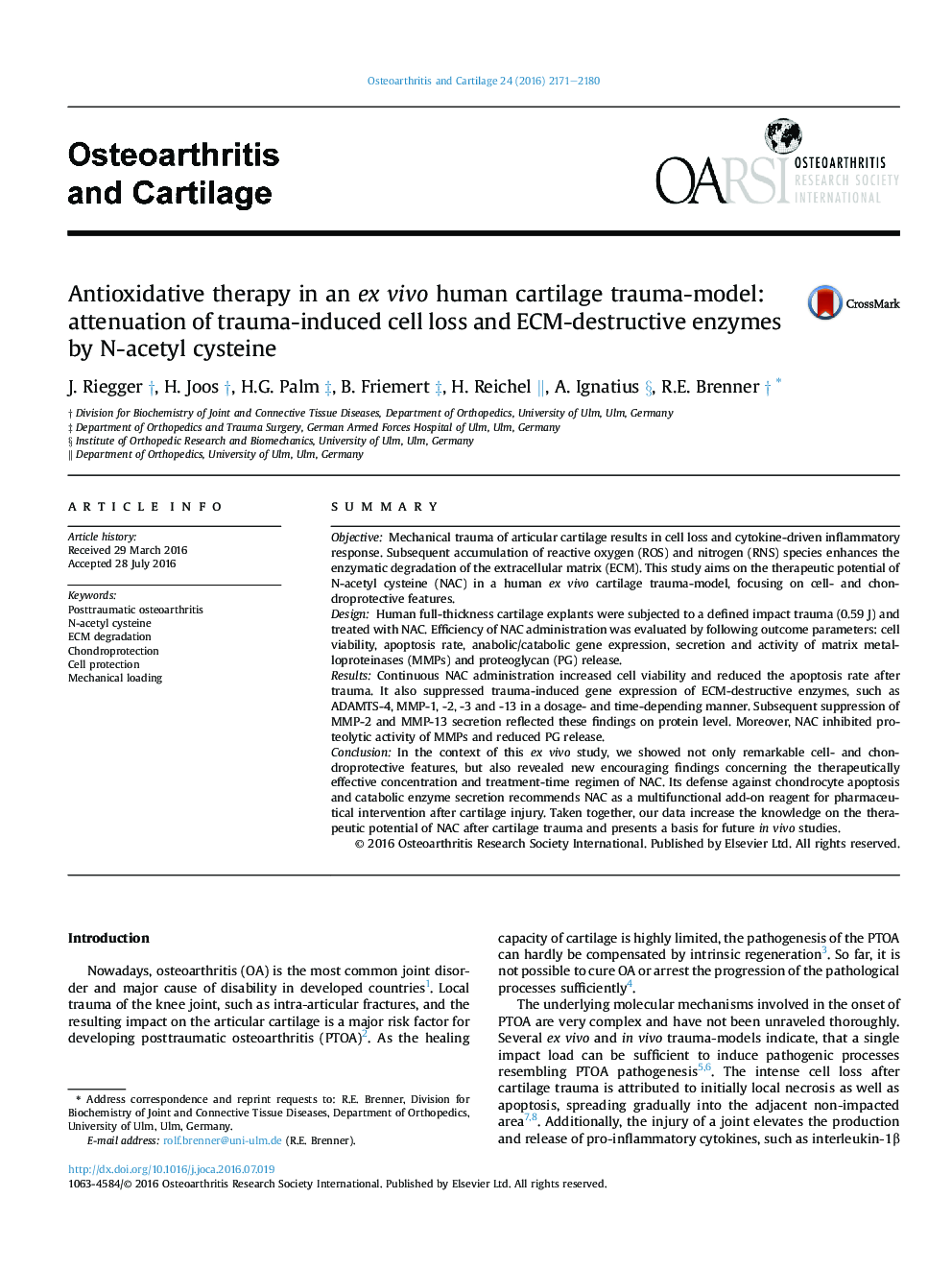| Article ID | Journal | Published Year | Pages | File Type |
|---|---|---|---|---|
| 5669342 | Osteoarthritis and Cartilage | 2016 | 10 Pages |
SummaryObjectiveMechanical trauma of articular cartilage results in cell loss and cytokine-driven inflammatory response. Subsequent accumulation of reactive oxygen (ROS) and nitrogen (RNS) species enhances the enzymatic degradation of the extracellular matrix (ECM). This study aims on the therapeutic potential of N-acetyl cysteine (NAC) in a human ex vivo cartilage trauma-model, focusing on cell- and chondroprotective features.DesignHuman full-thickness cartilage explants were subjected to a defined impact trauma (0.59 J) and treated with NAC. Efficiency of NAC administration was evaluated by following outcome parameters: cell viability, apoptosis rate, anabolic/catabolic gene expression, secretion and activity of matrix metalloproteinases (MMPs) and proteoglycan (PG) release.ResultsContinuous NAC administration increased cell viability and reduced the apoptosis rate after trauma. It also suppressed trauma-induced gene expression of ECM-destructive enzymes, such as ADAMTS-4, MMP-1, -2, -3 and -13 in a dosage- and time-depending manner. Subsequent suppression of MMP-2 and MMP-13 secretion reflected these findings on protein level. Moreover, NAC inhibited proteolytic activity of MMPs and reduced PG release.ConclusionIn the context of this ex vivo study, we showed not only remarkable cell- and chondroprotective features, but also revealed new encouraging findings concerning the therapeutically effective concentration and treatment-time regimen of NAC. Its defense against chondrocyte apoptosis and catabolic enzyme secretion recommends NAC as a multifunctional add-on reagent for pharmaceutical intervention after cartilage injury. Taken together, our data increase the knowledge on the therapeutic potential of NAC after cartilage trauma and presents a basis for future in vivo studies.
